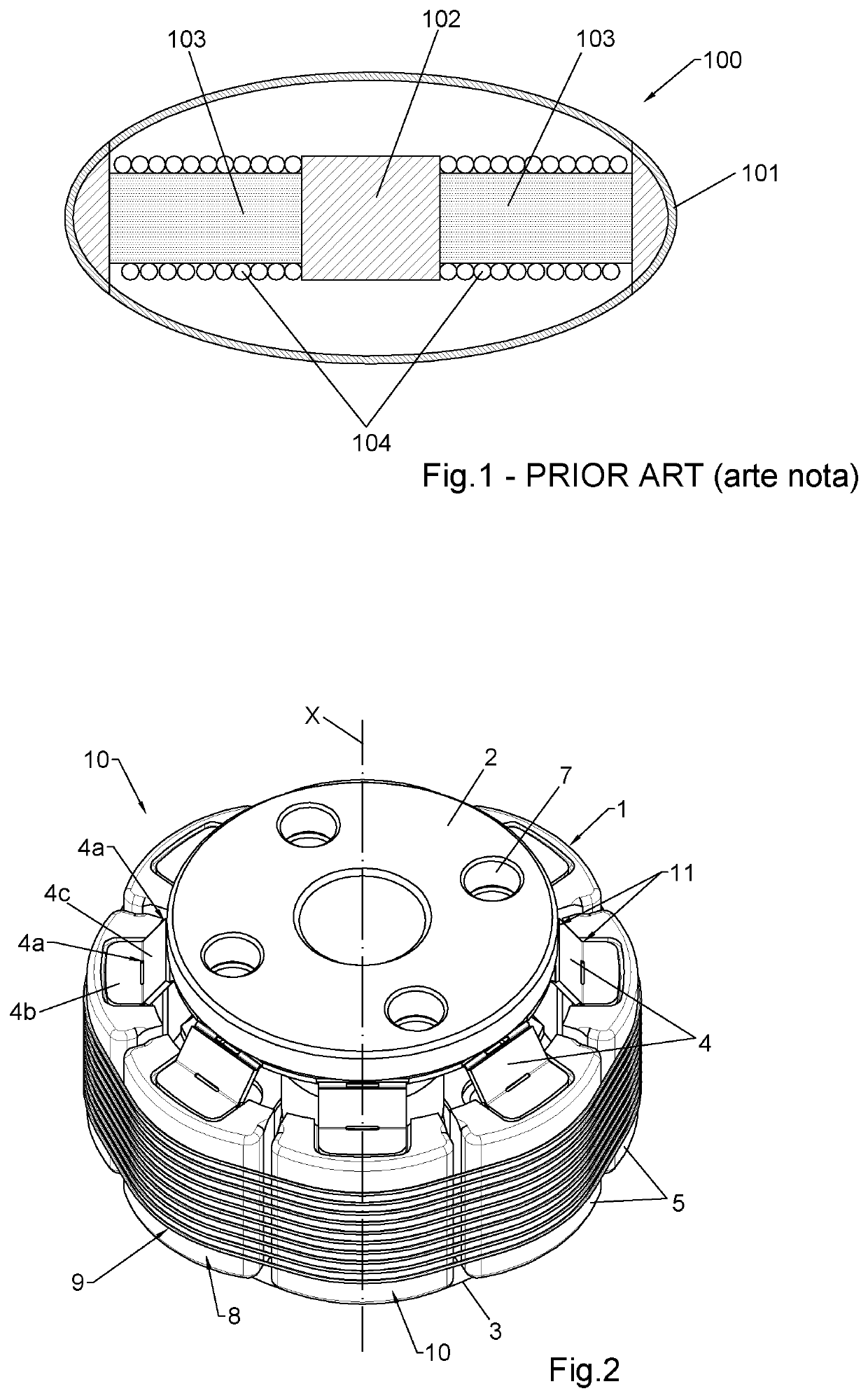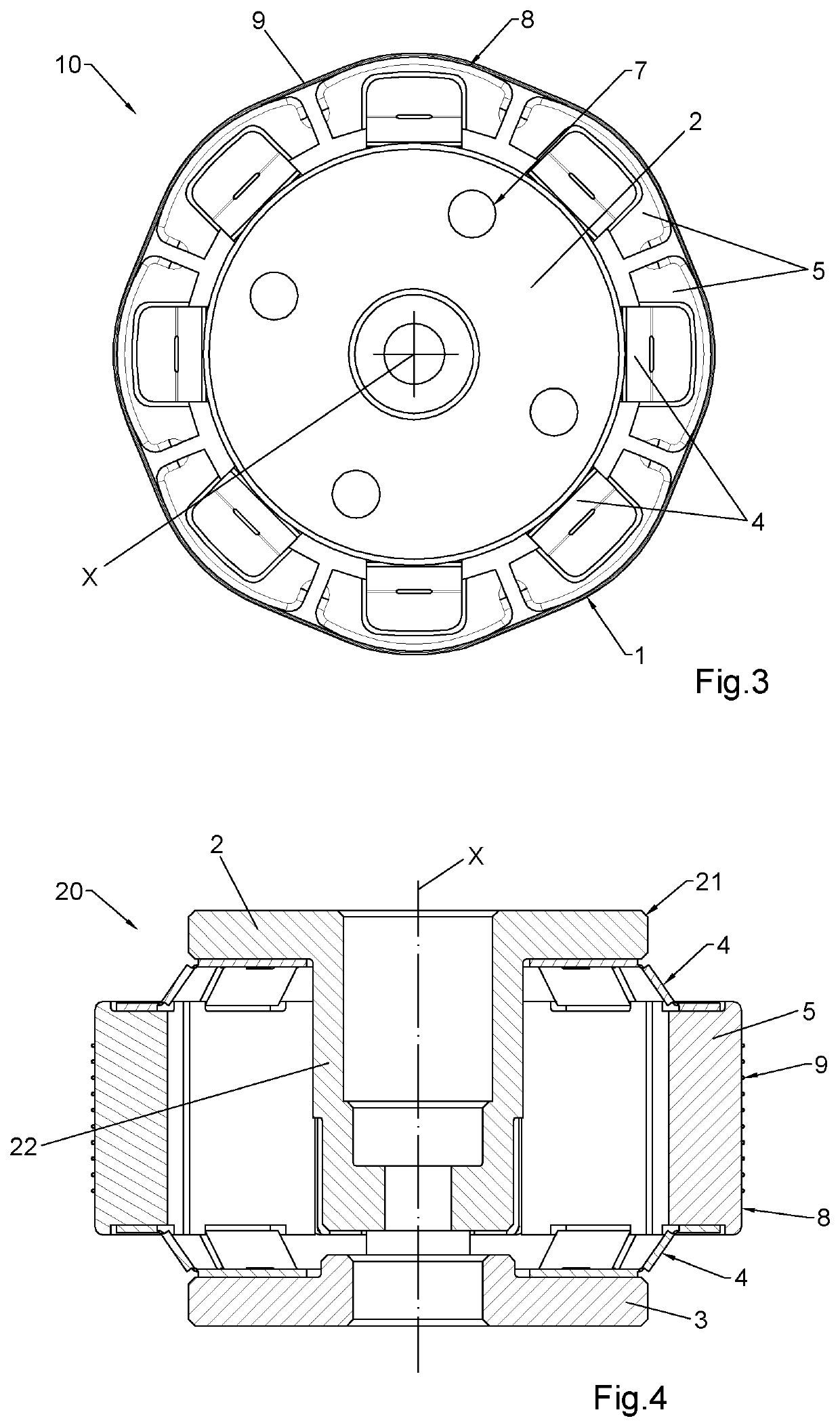Transducer structure, transducer comprising such transducer structure, and sensor comprising said transducer
a transducer and transducer technology, applied in the field of fibreoptic transducers, can solve the problems of limited geophone shape to be a long slender cylinder, the suspension mechanism of the transducer cannot be readily used for the axis the transverse axis is not easily aligned with the cylinder's axis, etc., to achieve high compressive stiffness, increase the torsional stiffness ratio ratio ratio
- Summary
- Abstract
- Description
- Claims
- Application Information
AI Technical Summary
Benefits of technology
Problems solved by technology
Method used
Image
Examples
Embodiment Construction
[0054]It is hereby noticed that, for the sake of clarity, when the drawings depict a number of elements that clearly have the same function, the reference number is reported only for one of those elements, being it understood that the same reference number applies to all the other of those elements.
[0055]FIG. 2 shows a transducer 10 according to the present invention, comprising a transducer structure 1 adapted to convert a deformation along a reference axis X into a radial deformation orthogonal to that reference axis X.
[0056]In this preferred embodiment, the reference axis X is the axis along which it is desired to measure force or displacement.
[0057]The transducer structure 1 comprises two end plates 2, 3, preferably disc-shaped, which are arranged along the reference axis X and mutually facing. Preferably, the centers of mass of both end plates 2, 3 are aligned with the reference axis X.
[0058]The transducer structure 1 also comprises a plurality of lateral bars 5, arranged aroun...
PUM
| Property | Measurement | Unit |
|---|---|---|
| angle | aaaaa | aaaaa |
| angle | aaaaa | aaaaa |
| pressures | aaaaa | aaaaa |
Abstract
Description
Claims
Application Information
 Login to View More
Login to View More - R&D
- Intellectual Property
- Life Sciences
- Materials
- Tech Scout
- Unparalleled Data Quality
- Higher Quality Content
- 60% Fewer Hallucinations
Browse by: Latest US Patents, China's latest patents, Technical Efficacy Thesaurus, Application Domain, Technology Topic, Popular Technical Reports.
© 2025 PatSnap. All rights reserved.Legal|Privacy policy|Modern Slavery Act Transparency Statement|Sitemap|About US| Contact US: help@patsnap.com



